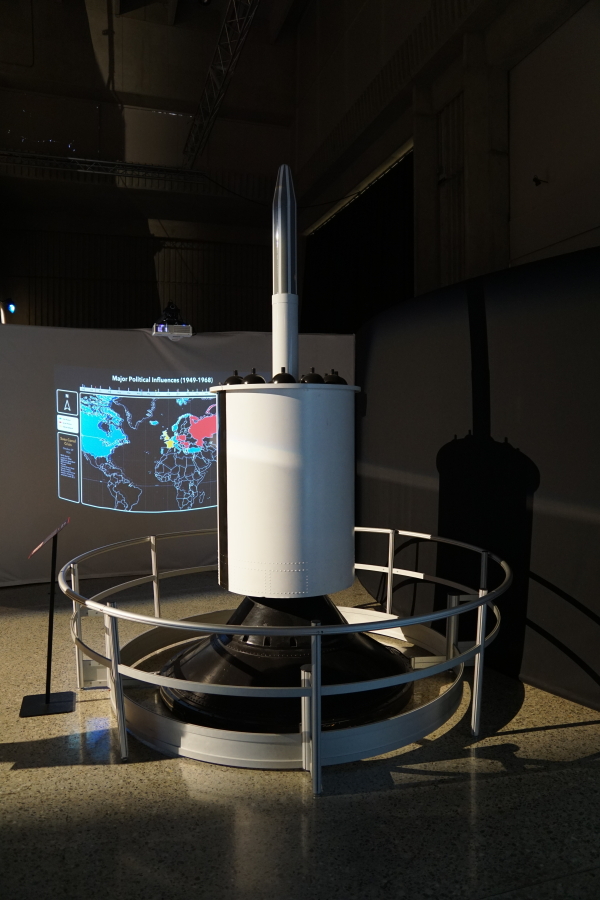| Prev |
heroicrelics.org Apollo: When We Went to the Moon Site Index Apollo: When We Went to the Moon Gallery |
Next |
dscd2979.jpg
A model of the Juno-type high-speed stages, including a model of the Explorer I satellite. The model slowly rotated (although it was stopped around the time the museum closed).
Picture 3 of 3.
Used as the upper stages of Jupiter-C, Juno I, or Juno II, the lengthened Redstone or Jupiter missile would serve as the first stage, while the "tub" would provide the second, third, and fourth stages. On Juno II missions, the high-speed stages were covered with an aerodynamic shroud that fastened to the Jupiter's instrument compartment.
All of the upper stages consisted of scaled Sergeant solid-propellant rocket motors, each four feet long and six inches in diameter. The second stage consisted of eleven of these motors in an outer, cylindrical ring. Fitting within this tube were the three bundled motors comprising the third stage. A fourth stage, consisting of a single motor, was mounted atop the third stage (the Jupiter-C, which was not intended to place its payload in orbit, instead mounted either a dummy fourth stage or a a scaled-down Jupiter nose cone atop the third stage, depending upon the mission).
This entire assembly was spin-stabilized to minimize the effects of thrust variations among the clustered motors.

| Time picture taken | Sat Jun 22 12:43:14 2019 |
| Location picture taken |
Apollo: When We Went to the Moon Exhibit Space Hall "Old" Museum U.S. Space & Rocket Center Huntsville, AL |
| Prev | Apollo: When We Went to the Moon Gallery | Next |